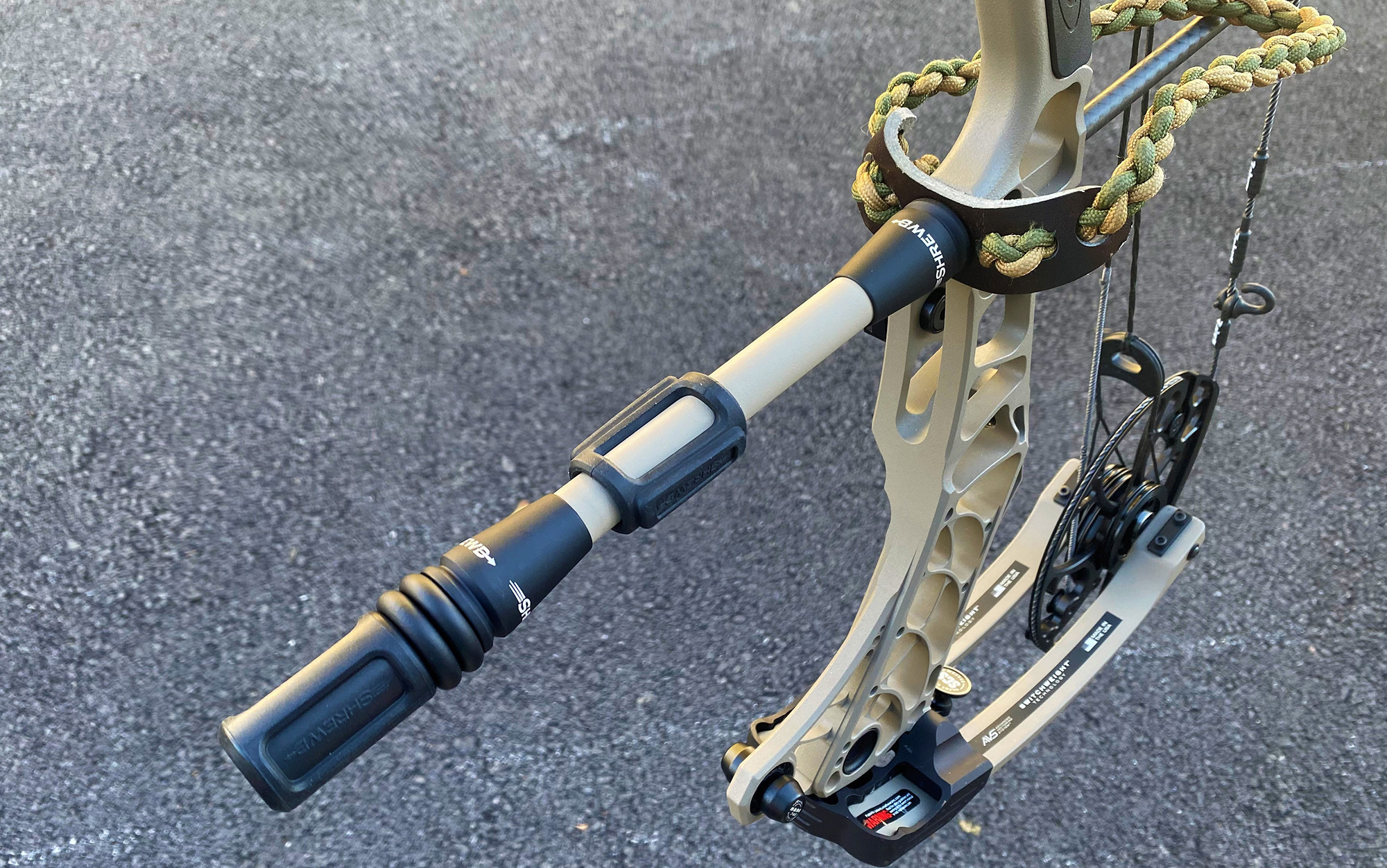Improve Your Shooting Performance with Top-Rated Bow Stabilizers
Improve Your Shooting Performance with Top-Rated Bow Stabilizers
Blog Article
Maximize Your Archery Accuracy With These Bow Stabilizer Techniques
One important element that can significantly impact your performance is the correct use of bow stabilizers. Whether you are an experienced archer looking to improve your abilities or a beginner eager to enhance your precision, understanding these bow stabilizer methods might be the trick to hitting your mark with unequaled uniformity.
Benefits of Making Use Of Bow Stabilizers
Using bow stabilizers can significantly enhance an archer's precision and total efficiency by lessening bow torque and resonance. Bow torque, brought on by the unequal distribution of weight in the bow, can lead to variances in shot placement. By connecting a bow stabilizer, the weight is rearranged, reducing the impacts of torque and assisting the archer achieve a much more regular shot. Furthermore, bow stabilizers dampen vibration, which not only boosts the convenience of shooting yet also prevents the bow from leaping upon launch, hence helping in maintaining correct objective.
Additionally, bow stabilizers can aid in holding the bow stable, especially during gusty conditions or when shooting from longer distances. The added weight at the front of the bow gives security and balance, enabling the archer to concentrate on aiming without the diversion of bow motion. In general, the advantages of utilizing bow stabilizers prolong beyond just accuracy, improving the archer's experience and efficiency in different shooting situations.
Selecting the Right Bow Stabilizer
Picking the proper bow stabilizer is critical for maximizing your archery equipment and boosting shooting efficiency. Larger stabilizers can aid reduce bow torque and soak up even more resonance, leading to a steadier aim.

Finally, think about the style of the stabilizer. Some stabilizers include flexible weights or dampeners that enable you to personalize the equilibrium and feel of your bow. Eventually, selecting the best bow stabilizer involves discovering a balance in between weight, design, length, and material to enhance your capturing precision and overall performance.
Proper Installation Techniques
To make sure optimal performance and safety and security in archery, grasping appropriate installation strategies for your bow stabilizer is important. The first step in setting up a bow stabilizer is to identify the right placement on your bow.
Next, securely connect the stabilizer to the bow using the suitable mounting hardware. Some stabilizers come with flexible weights that can be included or gotten rid of to adjust the balance of your bow.

Changing Stabilizer Weight and Size
After making certain the appropriate installation of your bow stabilizer, the following action involves adjusting the weight and size to optimize its efficiency in improving archery precision. The weight of the stabilizer plays an important function in minimizing bow motion throughout the shot cycle. Including weight to the stabilizer can aid dampen vibrations and boost stability, causing more accurate and regular shots. On the other hand, decreasing the weight can enhance maneuverability, which is beneficial for situations needing quick target procurement.
When it involves stabilizer size, finding the appropriate equilibrium is key. A longer stabilizer can supply greater stability by increasing the range between the bow and the weight at the end of the other stabilizer. This included range click here to read improves the maintaining effect, particularly in windy problems or when contending longer ranges. On the other hand, a shorter stabilizer offers extra ability to move and may be favored by archers who value agility and quick movements during capturing.
Advanced Stabilizer Tuning Tips
Attaining optimal bow security and accuracy in archery demands a nuanced method to sophisticated stabilizer tuning. Advanced stabilizer adjusting entails fine-tuning different parts to enhance the bow's equilibrium, reduce resonance, and improve total precision.
Another critical aspect of sophisticated stabilizer adjusting is optimizing the damping homes of the stabilizer system. This can be attained by incorporating added dampening accessories such as rubber dampeners or harmonic stabilizers to better decrease resonance and sound. Checking out different products for the stabilizer building and construction, such as carbon fiber or aluminum, can likewise affect the bow's efficiency by modifying its weight circulation and tightness. By diligently fine-tuning these advanced stabilizer aspects, archers can maximize their accuracy and consistency on the range or in competitors.
Final Thought
In final thought, taking full advantage of archery accuracy can be accomplished with the proper option, installation, and adjustment of bow stabilizers. On the whole, including bow stabilizers into archery practice can lead to better efficiency and raised precision.
Making use of bow stabilizers can considerably improve an archer's accuracy and overall efficiency by minimizing bow check my blog torque and resonance. Longer stabilizers provide higher security and equilibrium, especially for long-distance capturing, while much shorter stabilizers offer even more versatility and are simpler to steer in limited spaces (bow stabilizer). Carbon fiber stabilizers are sturdy and light-weight, while light weight aluminum stabilizers are robust and offer excellent resonance dampening
A longer stabilizer can give better stability by raising the range between the bow and the weight at the end of the stabilizer.One more critical facet of innovative stabilizer tuning is maximizing the damping residential or commercial properties of the stabilizer system.
Report this page